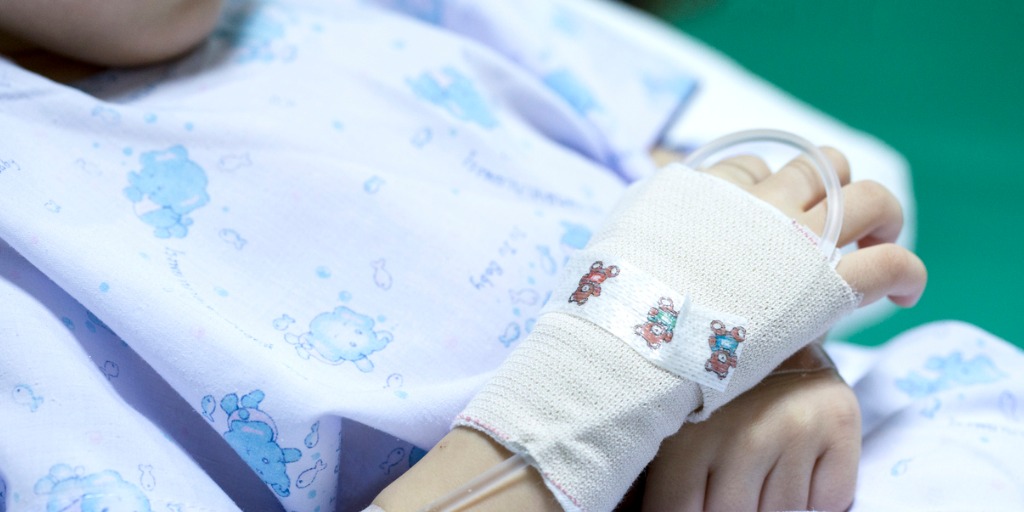Tuesday, March 2, 2021
NIH effort seeks to understand MIS-C, range of SARS-CoV-2 effects on children.
Contact:
nichdpress@mail.nih.gov
301-496-5133
nhlbi_news@nhlbi.nih.gov
301-496-5449
The National Institutes of Health has launched a new research effort to understand how SARS-CoV-2, the virus that causes COVID-19, affects children, who account for roughly 13% of the total cases of COVID-19 in the United States. The effort is called the Collaboration to Assess Risk and Identify Long-term Outcomes for Children with COVID (CARING for Children with COVID). This research program is developing and funding studies to investigate why some children are at greater risk for SARS-CoV-2 infection than others, why symptoms vary among children who are infected, and how to identify children at risk for severe illness from SARS-CoV-2 infection. Research on the latter question is focused particularly on multisystem inflammatory syndrome in children (MIS-C), a life-threatening condition marked by severe inflammation of one or more parts of the body, including the heart, lungs, kidneys, brain, skin, eyes and gastrointestinal organs.
The program is led by the National Heart, Lung, and Blood Institute (NHLBI) and the Eunice Kennedy Shriver National Institute of Child Health and Human Development (NICHD) in collaboration with the National Institute of Allergy and Infectious Diseases (NIAID). Research conducted through CARING for Children with COVID is supported in part by the Coronavirus Aid, Relief, and Economic Security Act.
“This effort stems from NIH’s commitment to understanding the spectrum of risk that SARS-CoV-2 poses for children and to identifying interventions to improve their short- and long-term health outcomes,” said NICHD Director and CARING for Children with COVID co-chair Diana Bianchi, M.D.
Based on current data, most children with SARS-CoV-2 infection do not develop serious illness. However, those who do go on to develop MIS-C can experience prolonged fever and severe abdominal pain and may progress to shock. Although most children with MIS-C survive, its cause and long-term effects remain largely unknown. There is also early evidence that some children with asymptomatic or mild infection may go on to develop such long term symptoms as fatigue, muscle and joint pain, and respiratory problems.
“While much of the devastation wrought by COVID-19 is on older and vulnerable populations, it is affecting children in ways we are just beginning to understand,” said Gary Gibbons, M.D., director of the NHLBI and co-chair of CARING for Children with COVID. “That’s why this research and these networks are so critical.”
Specifically, the program developed new research protocols for three clinical networks with sites across the country, to include children with SARS-CoV-2 infection and related conditions, including MIS-C:
- Long-Term Outcomes after the Multisystem Inflammatory Syndrome In Children (MUSIC). Funded by NHLBI and leveraging the Pediatric Heart Network, this study focuses on cardiovascular complications of MIS-C, but also collects data on all aspects of childhood and adolescent health in affected participants.
- Pharmacokinetics, Pharmacodynamics, and Safety Profile of Understudied Drugs Administered to Children per Standard of Care (POPS). Funded by NICHD and leveraging the Pediatric Trials Network, this study focuses on understanding the treatment of children diagnosed with COVID-19 or MIS-C with medicines that have shown promise in adults with COVID-19.
- Pediatric Research Immune Network on SARS-CoV-2 and MIS-C (PRISM). Sponsored and funded by NIAID, this study aims to evaluate the short- and long-term health outcomes of SARS-CoV-2 infection in children, including MIS-C, and to characterize the immunologic pathways associated with different disease presentations and outcomes.
CARING for Children with COVID also includes Predicting Viral-Associated Inflammatory Disease Severity in Children with Laboratory Diagnostics and Artificial Intelligence (PreVAIL kIds), a research funding program to encourage the development of approaches that identify children at high risk for developing MIS-C. PreVAIL kIds is funded by NIH’s Rapid Acceleration of Diagnostics (RADx) Radical (RADx-rad) program to support new, non-traditional approaches and reimagined uses of existing tools to address gaps in COVID-19 testing and surveillance.
Although the studies supported by CARING for Children with COVID have slightly different goals, all will collect data on a core set of health measures that can later be analyzed across studies. Data from CARING for Children with COVID activities will be made available on multiple NIH web platforms to allow researchers to conduct additional analyses and make more discoveries.
More information on the effort is available on the CARING for Children with COVID website at Caring4KidsWithCOVID.nih.gov.
###
About the Eunice Kennedy Shriver National Institute of Child Health and Human Development (NICHD): NICHD leads research and training to understand human development, improve reproductive health, enhance the lives of children and adolescents, and optimize abilities for all. For more information, visit https://www.nichd.nih.gov.
About the National Heart, Lung, and Blood Institute (NHLBI): NHLBI is the global leader in conducting and supporting research in heart, lung, and blood diseases and sleep disorders that advances scientific knowledge, improves public health, and saves lives. For more information, visit https://www.nhlbi.nih.gov.
About the National Institutes of Health (NIH): NIH, the nation’s medical research agency, includes 27 Institutes and Centers and is a component of the U.S. Department of Health and Human Services. NIH is the primary federal agency conducting and supporting basic, clinical, and translational medical research, and is investigating the causes, treatments, and cures for both common and rare diseases. For more information about NIH and its programs, visit https://www.nih.gov.



